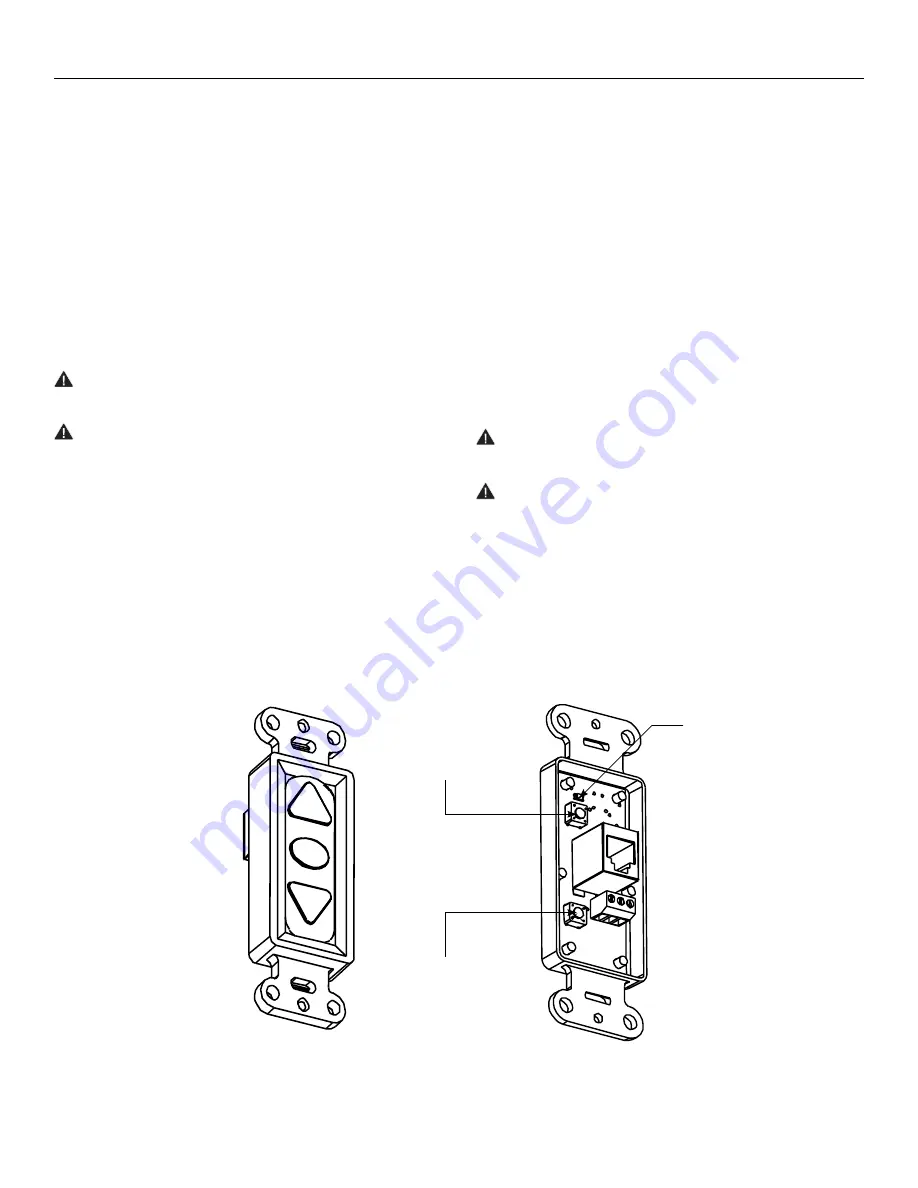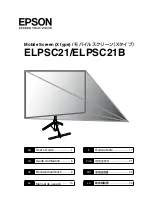
9
Screen Adjustment
1. Locate the wall switch and remove the cover plate from the
wall switch and remove the switch from the junction box.
2. Locate the two tactile buttons on the back of the switch.
They are black round buttons on silver plates.
3. To adjust the down limit switch, press and hold the down
tactile button until the LED on the back of the switch turns
solid red. This will put the motor in limit set mode. Turn the
wall switch over and use the down button on the front of the
switch. Press and hold the down button until the desired
down position is reached. If you travel too far down, press the
up button to move the screen upward. If you press and let go
of either the up or down buttons, the motor will do a small
jog in that direction for fine adjustment of the screen. Once
the desired position is reached, turn the switch over; press
and hold the down tactile button until the LED on back of
switch blinks red twice. The down limit is now set.
CAUTION: Do not adjust for more drop than what was
ordered. At least 1–1/2 wraps of fabric must remain on
the roller.
ATTENTION! N'effectuez pas de réglage pour obtenir un
déroulement supérieur à celui commandé. Au moins 1 à
1/2 tour de toile doit être maintenu sur le cylindre.
NOTE:
If the screen is in limit set mode and no buttons are
pushed for 20 seconds, the LED on the back of the wall
switch will turn off, the motor will return to run mode and no
changes will be saved. If this occurs, return to step 3 for down
limit adjustment or step 4 for up limit adjustment.
4. To adjust the up limit switch, press and hold the up tactile
button until the LED on the back of the switch turns solid
green. This will put the motor in limit set mode. Turn the wall
switch over and use the up button on the front of the switch.
Press and hold the up button until the desired up position is
reached. If you travel too far up, press the down button to
move the screen downward. If you press and let go of either
the up or down buttons, the motor will do a small jog in that
direction for fine adjustment of the screen. Once the desired
position is reached, turn the switch over; press and hold the
up tactile button until the LED on back of switch blinks green
twice. The up limit is now set.
5. To test the limit switch settings, press and release the up or
down buttons on the switch to operate the screen.
6. Replace the switch and cover plate on the wall.
IMPORTANT NOTE:
The wall switch is REQUIRED to make
any limit switch adjustments, even if a third party control
system is used. Therefore, it is advised to wire the switch or
provide a 3-conductor connection that is accessible.
Tensioned Screens
Models with tab-tensioned surfaces are standard with 12" of black
drop at the top.
CAUTION: Adjusting the down limit switch for less drop
by more than 6" can cause the screen surface to lose
proper tensioning.
ATTENTION! LE FAIT D'AJOUTER NE DÉROULEZ PAS
TROP L'ÉCRAN PLUS DE 15 CM (6PO) AUX
INTERRUPTEURS DE FIN DE COURSE PEUT FAIRE
PERDRE LA BONNE TENSION À LA SURFACE DE L'ÉCRAN.
Non-Tensioned Screens
Non-tensioned screens are pre-set with 2" of black drop at the
top with a total of 12" of fully adjustable black drop available.
UP
STOP
DOWN
BUS
C
O
M
5
V
Front of Wall
Switch
UP
STOP
DOWN
BUS
C
O
M
5V
LED
Up Limit
Tactile Button
Down Limit
Tactile Button
Back of
Wall Switch






























